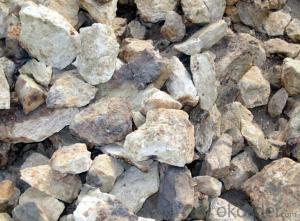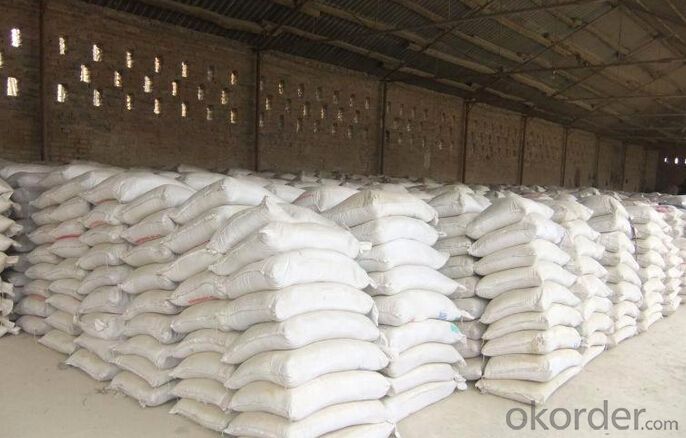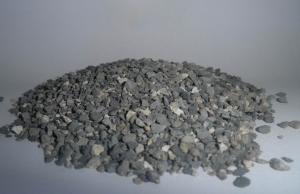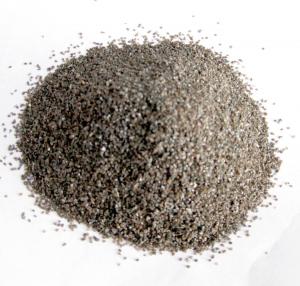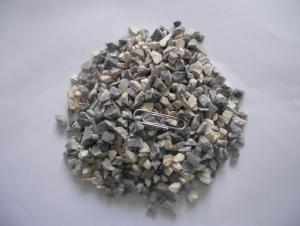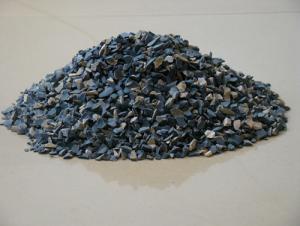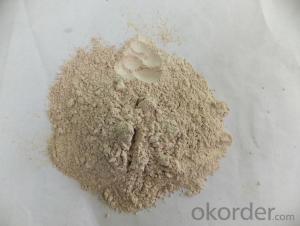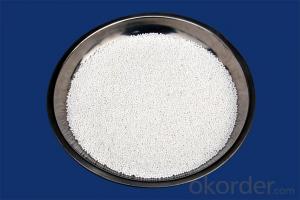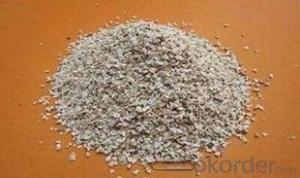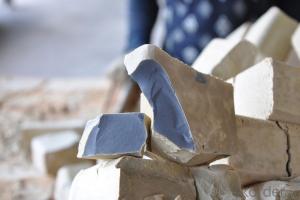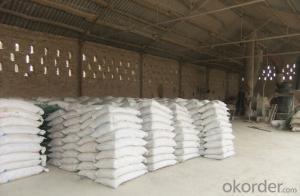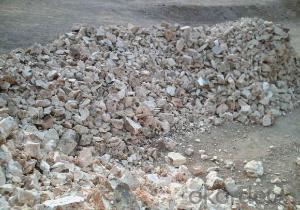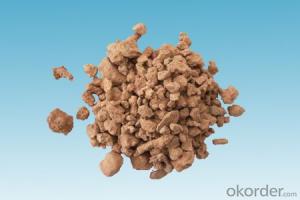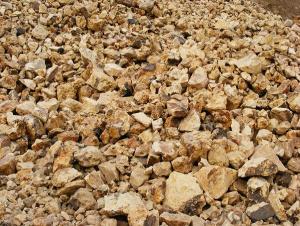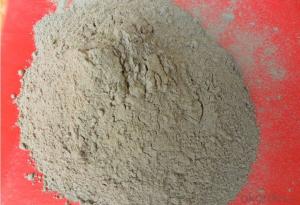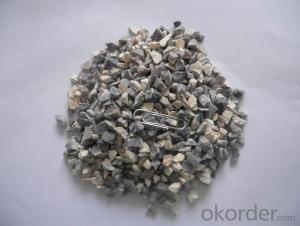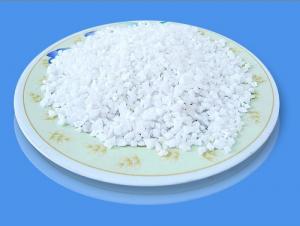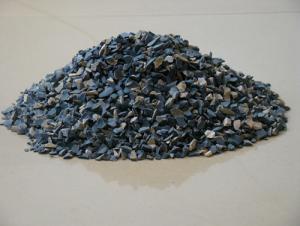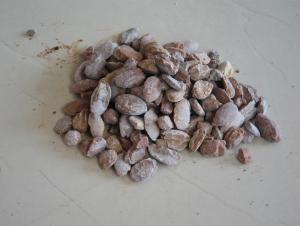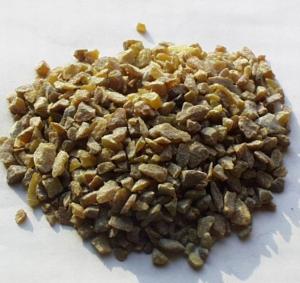Raw Materials for Refractory:Popular in Poland Bauxite of CNBM in China
- Loading Port:
- Tianjin
- Payment Terms:
- TT OR LC
- Min Order Qty:
- 20000 m.t.
- Supply Capability:
- 10000000 m.t./month
OKorder Service Pledge
OKorder Financial Service
You Might Also Like
1.Structure of Calcined Bauxite Description
Bauxite (aluminous soil; Bauxite) is also called the alumina or bauxite, main ingredients are alumina, hydrated alumina containing impurities, is an earthy mineral. White or gray, brown and yellow or light red by iron. From 4 to 3.9 g/cm3 density, hardness, 1 ~ 3 is not transparent, very brittle. Very difficult to melt. Insoluble in water, soluble in sulfuric acid, sodium hydroxide solution. Mainly used for aluminium, refractory material.
2.Main Features of the Calcined Bauxite
Calcined bauxite is one of the principal ore of aluminum. Calcined bauxite contains hydrous aluminum oxides and aluminum
hydroxides, formed through the laterization of aluminous rocks in tropical and subtropical areas .Calcined bauxite is obtained by calcining (heating)superior grade bauxite at high temperature (from 85OC to 1600C) .This removes moisture there. By increasing the alumina content,compared to an alumina content of about 57%to 58% in raw bauxite, calcined bauxite has an alumina content of 84%to88%.The heating is carried out in rotary kilns.
3. Calcined Bauxite Images
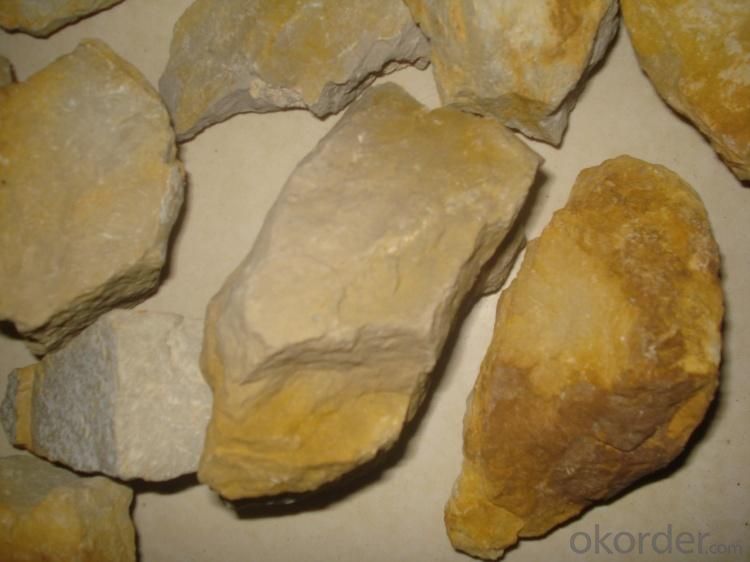
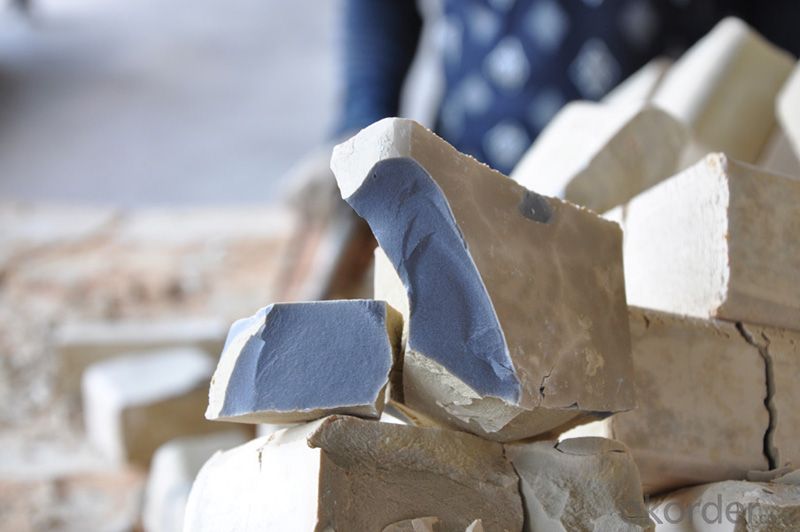
4. Calcined Bauxite Specification
ROTARY KILN BAUXITE
Al2O3 | Fe2O3 | SiO2 | TiO2 | K2O+Na2O | CaO+MgO | B.D (g/ccm) |
min | max | max | max | max | max | min |
88% | 1.8% | 6.5% | 4% | 0.25% | 0.5% | 3.25 |
87% | 2.0% | 7.0% | 4% | 0.25% | 0.5% | 3.15 |
86% | 2.0% | 7.0% | 4% | 0.25% | 0.5% | 3.15/3.10 |
85-80% | 2.0% | 10.0% | 4% | 0.30% | 0.5% | 3.10 |
ROUND KILN BAUXITE
Al2O3 | Fe2O3 | SiO2 | TiO2 | K2O+Na2O | CaO+MgO | B.D (g/ccm) |
min | max | max | max | max | max | min |
88% | 2.0% | 6.5% | 4% | 0.25% | 0.5% | 3.30 |
87% | 2.0% | 6.5% | 4% | 0.25% | 0.5% | 3.25 |
86% | 2.0% | 7.0% | 4% | 0.25% | 0.5% | 3.20 |
85% | 2.5% | 8.0% | 4% | 0.25% | 0.5% | 3.10/3.15 |
5.FAQ of Calcined Bauxite
1). Q: Are you a factory or trading company?
A: We are a factory.
2). Q: Where is your factory located? How can I visit there?
A: Our factory is located in ShanXi, HeNan, China. You are warmly welcomed to visit us!
3). Q: How can I get some samples?
A: Please connect me for samples
4). Q: Can the price be cheaper?
A: Of course, you will be offered a good discount for big amount.
Advantage:
1.High quality and competitive price.
2.Timely delivery.
3.If any item you like. Please contact us.
Your sincere inquiries are typically answered within 24 hours.
- Q: What's the feature of construction external wall fireproof and thermal inuslation matertial?
- It has properties of low heat conductivity coefficient, low density, high flexibility, fireproof and waterproof. Its heat conductivity coefficient at normal temperature is 0.018W / (K · m) . The thermal insulation property is three to eight times that of the traditional materials. And it is completely waterproof. [2] Thermal insulation lining has properties of low heat conductivity coefficient, low density, high flexibility, fireproof and waterproof. Light, generally about10-96kg / m3, 20kg / m3 or less is felt, 24-48kg / m3 is middle-hard plate, 48-96kg / m3 is hard plate, wherein 48kg / m? can be used as ceiling, with softening point being 500 ° C , thermal insulation 300 ° C. It is widely used in the United States, k =0.9. Calcium silicate thermal insulation product is developed in 1970s in China. With high compressive?strength, low heat conductivity coefficient, recycle and easily construction, it is widely used in the power system. In China, small workshop?production were the most common, then four production lines were gradually introduced from America, including instant fiber forming, dry method punched felt, which are advanced and quality, temperature endurance up to 800-1250 ° C.
- Q: How much is the content of boron carbide in refractory material?
- Is it available to iron materials?. Answer: It can be applied to all products, what you need is just a general proportion. Nevertheless, you’d better tell me what product it is exactly.
- Q: Is the ball mill used in production of refractories?
- It depends on what refractory you produce.
- Q: What are the construction measures of refractory material in winter? Please descriptive briefly.
- The temperature is low in winter, so refractory bulk materials should be stirred evenly on time to avoid freezing.
- Q: Can I use ordinary cement with the addition of sand, clay, and salt as refractory material to paste the stove?
- You can add some hair, sand, yellow mud and some salt, but don’t use cement, it would lead to a thermal explosion.
- Q: What things and cement mixed can act as refractory?
- Cement building, portland cement, refractory grade, calcium aluminate. Cement acts as refractory need to use calcium aluminate cement.
- Q: What's the classification of flameproof glass, the refractory time of fireproofing glass.
- Fireproofing glass partition has the advantages of thermal insulation,resistance slow fire spreading and smoke insulation. when the fire broke out, it can creat favorable conditions for the rescuing of personnel, property and buildings, reduce the loss to mininum level, it has gained people's favor and has huge market potential. it's widely used in computer rooms, and high precision laboratory, school,core parts of party and government organs. In the past two years, there are several major fire accidents happened in domestic, such as Shanghai jing 'an district high-rise residential, CCTV new address Beipei building, which have caused serious loss and damage. Fireproofing glass naturally become the focus, China has carried out a wide range of fire control safety inspection work, the fireproofing consciousness of people has been gradually improved. Fireproofing glass, fire-resistant glass partition, firewall, fire doors, and other products are highly emphasized. Industry analyst of Beijing Lisiduoge partition materials believes that fireproofing glass partition is a new kind of construction fire-proof material, and is mainly used for making firewall, fire doors, fire partition,etc. Europe divide fireproofing glass into composite thermal insulation type and one-side complete fireproof glass. Divided from fire resistance levels, fireproofing glass can be divided into 30 minutes, 45 minutes, 60 minutes and 90 minutes four levels. Domestic fire partition indicators in line with international standards has fully embodied the countrymen have paid more and more attention on fireproofing safety.
- Q: How to choose refractory material
- Refractory fiber in different furnace material requirements are different, I would like to know is methanol as a protective gas, fire fiber, cotton material what?.
- Q: Which region use more refractory?
- Gongyi of Henan province use more refractories
- Q: What is refractory?
- Refractory materials are widely used in metallurgy, machinery manufacturing, chemical industry, petroleum, power and other industrial fields. It is an inorganic nonmetallic material mostly used in metallurgical industry with the minimum refractoriness of 1580 ℃, able to resist high temperature without softening (annealing). It accounts for 50% to 60% in total output. Refractoriness refers to refractory's ability to resist fire.
Send your message to us
Raw Materials for Refractory:Popular in Poland Bauxite of CNBM in China
- Loading Port:
- Tianjin
- Payment Terms:
- TT OR LC
- Min Order Qty:
- 20000 m.t.
- Supply Capability:
- 10000000 m.t./month
OKorder Service Pledge
OKorder Financial Service
Similar products
Hot products
Hot Searches
